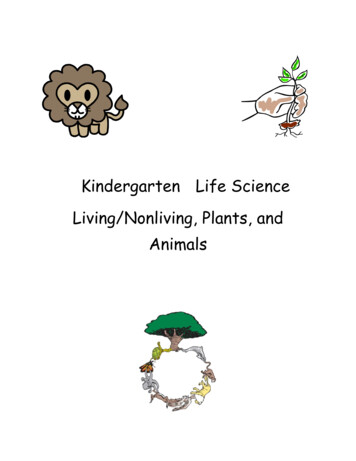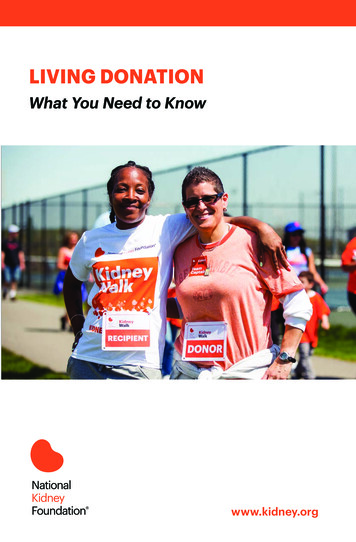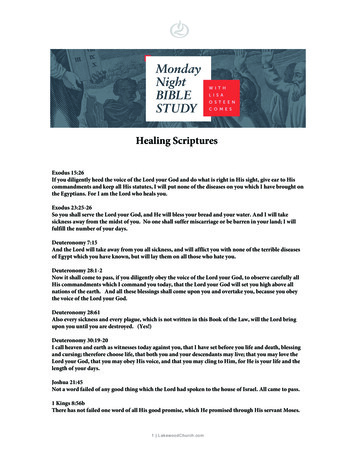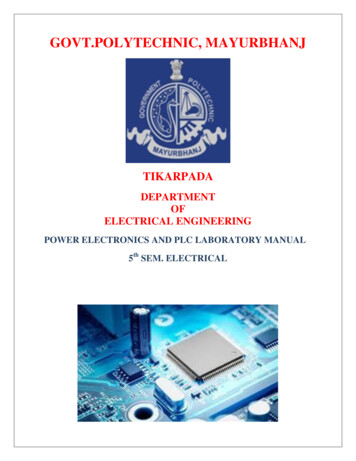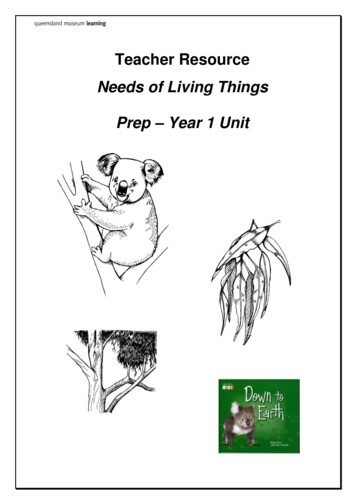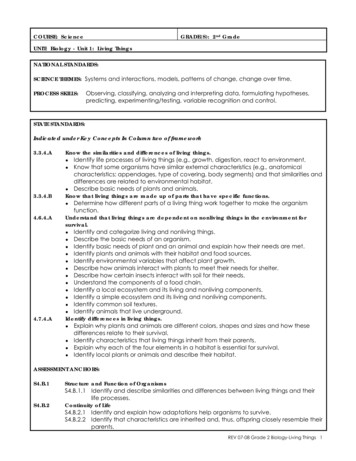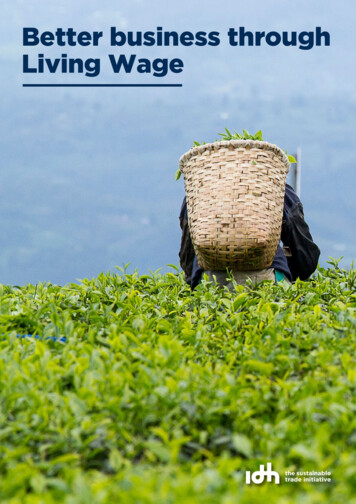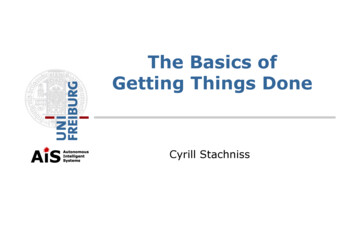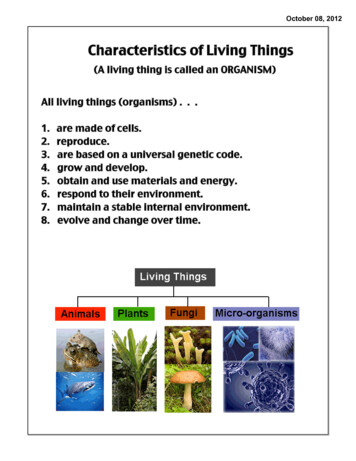
Transcription
October 08, 2012Characteristics of Living Things(A living thing is called an ORGANISM)All living things (organisms) . . .1.2.3.4.5.6.7.8.are made of cells.reproduce.are based on a universal genetic code.grow and develop.obtain and use materials and energy.respond to their environment.maintain a stable internal environment.evolve and change over time.
October 08, 2012#1 All living things (organisms) aremade of cells.1. Cells – the basic unit of function and structure inliving things.2. Organisms can be . . .a) UNICELLULAR – made of only one cell!Examples: Bacteria, protists,some fungi like yeastb) MULTICELLULAR – made of many cells.Examples: Animals, plants, fungi3. While all cells have the same basic parts, cellscan look different and be specialized for certainjobs.Examples:Red blood cellsBacteriaOnion cellsNerve cells
October 08, 2012#2 All living things REPRODUCE.1. REPRODUCTION is making more of the same kind.2. There are two types of reproduction:a) ASEXUAL reproduction – creating two identicalorganisms from one parent organism.Offspring are IDENTICAL to each other and theoriginal parent organExamples:b) SEXUAL reproduction – two parent cells, maleand female, are required to create a neworganism.Male sex cells are called SPERM.Female sex cells are celled EGGS.Joining of egg and sperm is FERTILIZATION.Sexual reproduction leads to VARIATION in aspecies; offspring are NOT identical to parents,but are a mix or blend of both.Example:(egg)(will develop intonew organism)
October 08, 2012#3 All living things are based on a universalgenetic code1. DNA – Deoxyribonucleic acidThe molecule that controls all of the traits, orcharacteristics of an organism.Sometimes referred to as the "blueprint" for life.2. The DNA molecule is composed of 4 main partscalled BASES. The order of the bases on themolecules determines your traits.3. ALL ORGANISMS' DNA has the same bases, whichis evidence that all organisms are related!4. Each section of aDNA molecule hasinfo for a specifictrait – called aGENE.
October 08, 2012#4 All living things grow and develop1. One special type of development is calledMETAMORPHOSIS. It is a specific series of stagesfrom egg to adult.2. Two types of metamorphosis in insects:a) COMPLETE: egg, larvae, pupa, adultb) INCOMPLETE: egg, nymph, adult3. Metamorphosis in frogs:4. Most other organisms, including humans, justresemble larger versions of their younger selves.
October 08, 2012#5 Living things obtain and use materials and energy1. All living things need food, water, and energy togrow, develop, and carry out their daily lifeprocesses.2. There are two types of organisms based on howthey get food:a) AUTOTROPHS (producers): Get energy directlyfrom the sun and use it to make their own foodin a process called PHOTOSYNTHESIS.Examples:(Food)b) HETEROTROPHS (consumers): Get energy fromeating plants or other organisms that ate theplants.Examples:
October 08, 2012#6Living things respond to their environmentSTIMULUS: A change in the environment.RESPONSE: A reaction to a stimulus.Examples of stimulus – response:1. Stimulus: An alarm rings.Response: Get out of bed.2. Stimulus: Sunset.Response: Flower closes up.3. Stimulus: Too much water in body.Kidneys produce more urine.
October 08, 2012#7 Living things maintain a stable internalenvironmentThe ability to maintain a stable internal (inside body)environment is called HOMEOSTASIS.Think of it as keeping the body balanced.Examples of HOMEOSTASIS:1. Body temperature – 98.6 degrees (37 Celsius)2. Blood glucose (sugar) levels – after eating yourbody produces a chemical called INSULIN to loweryour blood sugar levels.3. Water levels – regulated by kidneys
October 08, 2012#8 As a group, living things evolve and change overtimeEVOLUTION: Slow change in a species over a long(really long) period of time.
October 08, 2012Stuff Mrs. Bartlett Forgot
#5 Living things obtain and use materials and energy 1.All living things need food, water, and energy to grow, develop, and carry out their daily life processes. 2. There are two types of organisms based on how they get food: a) AUTOTROPHS (producers): Get energy directly from the sun and use it to make their own food

